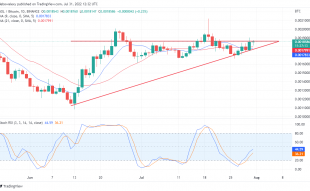Join Our Telegram channel to stay up to date on breaking news coverage
The ongoing legal tussle between Twitter, Inc. and Tesla CEO took a new dimension last Friday after the latter countersued the executives of the social networking platform. As per emerging reports, the Tesla founder confidentially filed the suit to frustrate efforts by Twitter executives to sustain the $44 billion takeover deal.
The legal filing by Musk materialized a few days after the Delaware Court of Chancery directed the instigation of a five-day trial to study the contract terms and determine if Musk could walk away from the deal.
The court submitted that Musk’s submission lacks merit. According to the Chief Judge, Kathaleen McCormick, Musk’s legal team is frustrating efforts to hasten the proceeding. The legal team reportedly filed that the case trial begins next February. The court declined the request, directing the beginning of the trial from October 17.
Additionally, one of the shareholders of Twitter also sued the Tesla founder last Friday. The shareholder wants the court to prevail on Musk to complete the Twitter takeover deal and award damages for losses caused by him.
Tesla’s CEO is a prominent figure in the crypto industry due to his support for DogeCoin. His presence in the industry is so influential that when he announced plans to launch a formal bid for a Twitter takeover, DogeCoin soared by 30%. The takeover attempt by Elon Musk also attracted Binance and other institutional investors in the crypto industry.
Binance, for instance, initially planned to invest $500 million in equity funding to support Musk’s Twitter bid. According to reports, Binance has overly shown faith in the potential of social media as a driving force for the crypto industry. Similarly, other investors, like Oracle and Sequoia, also announced their intention to finance part of the deal.
However, in early July, the Tesla CEO announced the termination of the proposed Twitter takeover. The billionaire accused the Twitter executives of presenting misleading data on the number of spam accounts on the social networking site. The Tesla founder then decided to temporarily put the deal on hold last May to verify all the data presented to him by the Twitter team.
Elon Musk later accused the Twitter board of presenting a wrong figure to influence his potential purchase of the firm. He accused the board of breaching the deal’s trust and terms, prompting his decision to halt the deal. A few hours after Musk’s announcement, the firm’s shares endured a 66% decline on the New York Stock Exchange (NYSE).
Consequently, Twitter executives filed a lawsuit with the Delaware Court of Chancery. The executives asked the court to stop the Tesla founder from terminating the takeover deal. The Chairman of the Twitter board, Bret Taylor, in a July 8 post, maintained the board’s commitment to ensuring the completion of the takeover deal. Bret dismissed the allegation by Musk that the board provided misleading information about existing spam accounts on Twitter. He insisted that the number of spam accounts running on the platform is below 5%.
According to the Twitter team, the ongoing tussle has continued to inflict dire implications on the operations of Twitter. Consequently, the Delaware court granted the request, directing the commencement of the trial in October. This directive, as reported, is a setback to Musk’s team and has resulted in a counter-filing by the Tesla founder.
Twitter has continued to function as a veritable platform for interaction within the crypto community. Recently, the microblogging app adopted a feature allowing users to receive BTC with the app. Also, numerous crypto ventures now rely on the platform to carry out their marketing activities.
Related
- Elon Musk advocates for crypto payments on Twitter
- Recent crypto crash triggers crypto Twitter debate
Join Our Telegram channel to stay up to date on breaking news coverage


